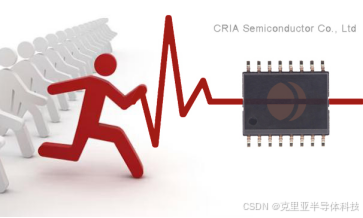- asunx@asunx.com
Industry News
- home
- >
ASUNX Semiconductor

Custom-centered, quality-based, leading into the intelligent era
Bolder, wilder, and smarter
Contact Us for More Information
Contact Us Now
zhongwei@asunx.com
Exploring Solid State Relays for Green Energy Systems: A 2025 Outlook

As the global transition to green energy accelerates, the demand for efficient, reliable, and environmentally friendly components has never been stronger. Against this backdrop, domestically produced solid state relays (SSRs) play a crucial role in enabling key technologies such as solar inverters, wind turbines, and energy storage systems. This article explores the prospects of China's SSR industry within the context of green energy systems and highlights the outlook for 2025.
1. Growing Demand for Green Energy Solutions
Green energy systems rely on advanced power management technologies to maximize efficiency and minimize losses. Known for their durability, fast switching speeds, and resistance to mechanical wear, solid state relays are increasingly becoming the preferred choice over traditional electromechanical relays. The adoption of renewable energy, particularly solar and wind power, is driving the demand for SSRs in power control and distribution applications.
Market Potential of Domestic SSRs:
Domestic solid state relay manufacturers in China are well-positioned to meet this demand. As a global leader in renewable energy project investments, China-manufactured SSRs hold significant potential to dominate the local market and expand into emerging markets where green energy applications are rapidly growing.
2. Advantages of Domestic Solid State Relays
Domestic solid state relays offer several advantages that align with the needs of green energy systems:
Efficiency and Longevity:
Domestic SSRs provide superior switching capabilities with minimal energy loss, ensuring higher system reliability over extended operational periods.Cost Competitiveness:
Leveraging advanced manufacturing processes and economies of scale, Chinese SSRs deliver excellent performance at competitive prices, making them ideal for large-scale renewable energy facilities.Customization for Local Needs:
Many domestic manufacturers specialize in offering tailored solutions to meet the requirements of specific applications, such as grid-tied solar inverters and off-grid energy storage systems.
3. Challenges to Address
Despite these advantages, domestic solid state relays face challenges in achieving broader application. Key obstacles include:
Technological Advancement:
Competing with international brands that lead in advanced materials and thermal management solutions remains a critical challenge.Global Perception:
Some markets perceive Chinese products as lower in quality, highlighting the need for domestic companies to emphasize quality assurance and global certifications.Export Barriers:
Trade restrictions and geopolitical dynamics may hinder the export of domestic SSRs to key international markets.
4. Strategies for 2025 and Beyond
To enhance competitiveness, domestic SSR manufacturers must adopt several strategic measures:
Invest in R&D:
Developing next-generation SSRs with higher voltage ratings, improved thermal performance, and compact designs will meet the evolving demands of green energy systems.Collaborate with Renewable Energy Companies:
Partnering with green energy solution providers to develop optimized SSRs can ensure better adaptation for specific applications, such as smart grids or electric vehicle charging stations.Quality and Certification:
Obtaining global certifications such as UL and CE while maintaining stringent quality standards will improve market perception and facilitate exports.
5. Outlook for 2025
By 2025, the domestic SSR industry is expected to experience significant growth, driven by China's continued leadership in renewable energy projects. Innovations in SSR technology, coupled with government policies supporting local manufacturing, will enable Chinese companies to capture a larger share in both domestic and international markets.
With a focus on quality, innovation, and strategic partnerships, domestic solid state relays will play a pivotal role in advancing green energy systems. This not only aligns with global sustainability goals but also supports China's ambition to lead the next wave of technological advancements in renewable energy infrastructure.
